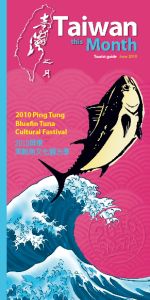Taiwan is situated off the southeastern coast of China. Xiamen in Fujian Province, Mainland China, is the closest city across the Taiwan Straits. It has a total land area of 36,000 sq km, a population of 23 million and a GDP p.c. of US$ 32,489 (2008). 99% of the population is covered by the national health insurance. All children receive nine years free and compulsory education.
Since May 2008, the elected Chief of State: President MA Ying-jeou, Vice President Vincent SIEW, Head of Government, since September 2009: Premier (president of the executive Yuan) WU Den-yih, Vice Premier Eric CHU.
Taiwan foreign trade is 72% of their GDP. Its 4.8 million broadband internet subscribers (March 2008) situate Taiwan among the most modern countries. Taiwan laptop makers hold 90% of the global market share, and have a unique disintegrated infrastructure in the semiconductor industry. All industries are undergoing a transformation to improve their added value and position on the value chain. Taiwan's strategic location in relation to both Taiwan Strait and Luzon Strait is highly beneficial, enabling rapid transportation (air or sea) to other cities in the region at low cost. Taiwan and China now have direct cross-strait flights.
The climate is subtropical with a typhoon season from June to September. Its position on the boundaries of the Eurasian and Philippine tectonic plates makes Taiwan vulnerable to earthquakes. Volcanic activity is apparent everywhere as the island is dotted with volcanic hot springs.
Buddhism, Confucianism and Taoism are practiced throughout the island, with a small but significant Christian population. Taiwan's culture is a blend of its distinctive Chinese, Japanese, and Western influences.
Most "native" Taiwanese migrated from Fujian and Guangdong Provinces on the mainland, primarily in the 18th and 19th centuries. About half a million indigenous peoples inhabit the mountainous central and eastern parts of the island.
Mandarin Chinese is the spoken language, which has been the medium of instruction in the schools for more than five decades. The southern Fujian dialects also known as Taiwanese and Hakka are spoken in several counties throughout Taiwan. As a result of the half-century of Japanese rule, many older people can also speak Japanese. The method of Chinese romanization is not consistent, often resulting in two or more romanizations for the same place or person.

